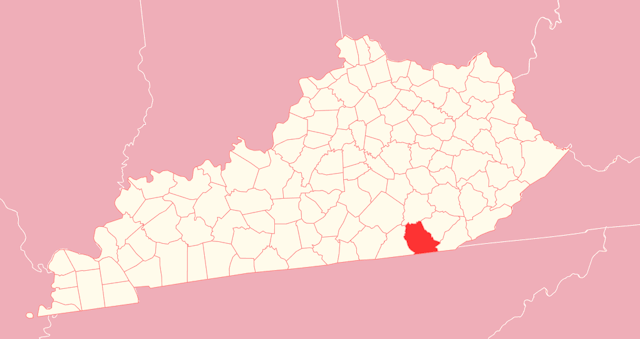Rehabs in Whitley
Whitley county was founded on January 17, 1818, in Kentucky, US. Its total area is 445 sq mi (1,150 km2). According to data, the population was 12,957 in 2021, decreasing by -0.46% from the previous year.
Formally, it has two cities. The first is Corbin, the largest one, and the next is county seat Williamsburg. This province is a moist region since some areas permit the sale and consumption of alcohol with some limitations. As a result, it had 36% of alcohol-impaired driving deaths in 2021.
Yet, drug abuse has registered higher than average numbers. So, emergency department visits with substance use disorder (SUD) were rated 1,091per 100,000 residents in 2021. Meantime, it reported 184 inpatient hospitalization. Moreover, 29 people died from an overdose of drugs.
As statistics show, this region is in a crisis of substance use dependence. For that purpose, Whitley county rehabs, with the help of the Health Department, try to decrease the problem by various means.
Drug and Alcohol Evaluation
When people come to the clinic, they aim to find the right cure plan that the evaluation provides. Experts assess clients to determine the extent of their addictions. It is the first phase toward recovery.
The admission team asks questions to identify an individual's condition. Then, they direct patients to one of the proper programs in their center.
Rehab Programs in Whitley County
Various specialty centers specifically treat all types of opioid and alcohol use disorders. They offer all levels of care for the benefit of residents.
Detox
Generally, licensed facilities provide drug and alcohol detox. It is the process when chemicals leave the body. However, it causes pain and discomfort. So, rehabs in Whitley county successfully control and eliminate these discomforts.
Centers also use medical detox to treat severe symptoms or difficulties. It has several benefits that promote a continued cure for substance abuse and addiction.
Inpatient (IP)
IP itself is the only residential care. That is, patients are under 24/7 support and supervision at the facility. IP is designed to heal drug dependence, such as alcohol, heroin, and opioids. The advantage of the residential program is that the person is away from the addictive environment.
IP is a broad concept, not only for addiction but also for healing complex issues. Those include mental and behavioral cases.
Experts decide the duration of the stay and the density of the program. It usually ranges between 30, 60, and 90 days. Even so, if a person needs more, expanded choices are available.
Outpatient (OP)
OP allows clients to attend the clinic daily, participate in meetings, and return home. It involves group and family therapy and counseling. OP encourages life skills in patients so that to reintegrate into the community. Those guide independent and sober lifestyles.
OP is designed for people who have not fully recovered after the inpatient plan. Clients who had an unsuccessful attempt to prevent several relapses may also participate in this stage.
Partial Hospitalization (PHP)
Like other treatment plans, PHP has its advantages. On the one hand, people receive almost the same methods of residential care. On the other hand, it provides the same outpatient flexibility.
PHP takes place five days per week and lasts almost all day. Patients attend various activities such as:
Individual and group counseling
12-step program
Outdoor, fitness, and group activities
Peer support service
Payment Options Without Insurance
Medical centers in this province accept almost all health insurance plans. If someone does not have the coverage, they can pay through Medicare/Medicaid and state-funded health insurance. Finally, clinics have special discounts in the case of self-pay.
Forcing Teens Into Rehabilitation
Adolescents suffer from substance abuse just as much as adults. Hence, this region has special treatment services for teens under the influence of drugs and alcohol. Their plans are different from those of adults.
Unlike them, minors require more care and attention. That is why the clinics present special events and educational programs next to the schools.
So, forcing teens unnecessarily into rehab is nonsense. Parents can contact them, and they will show an individual approach to teenagers.

